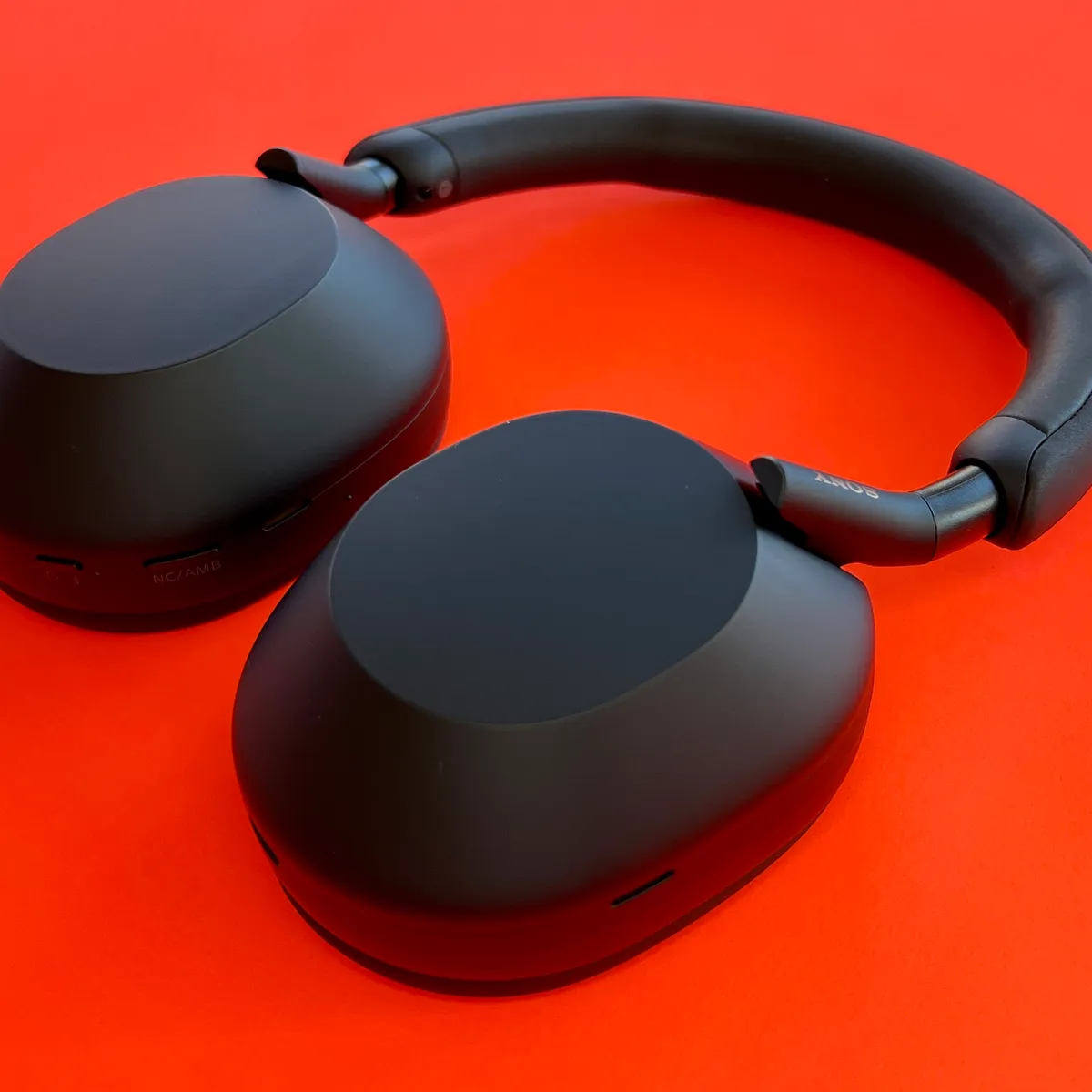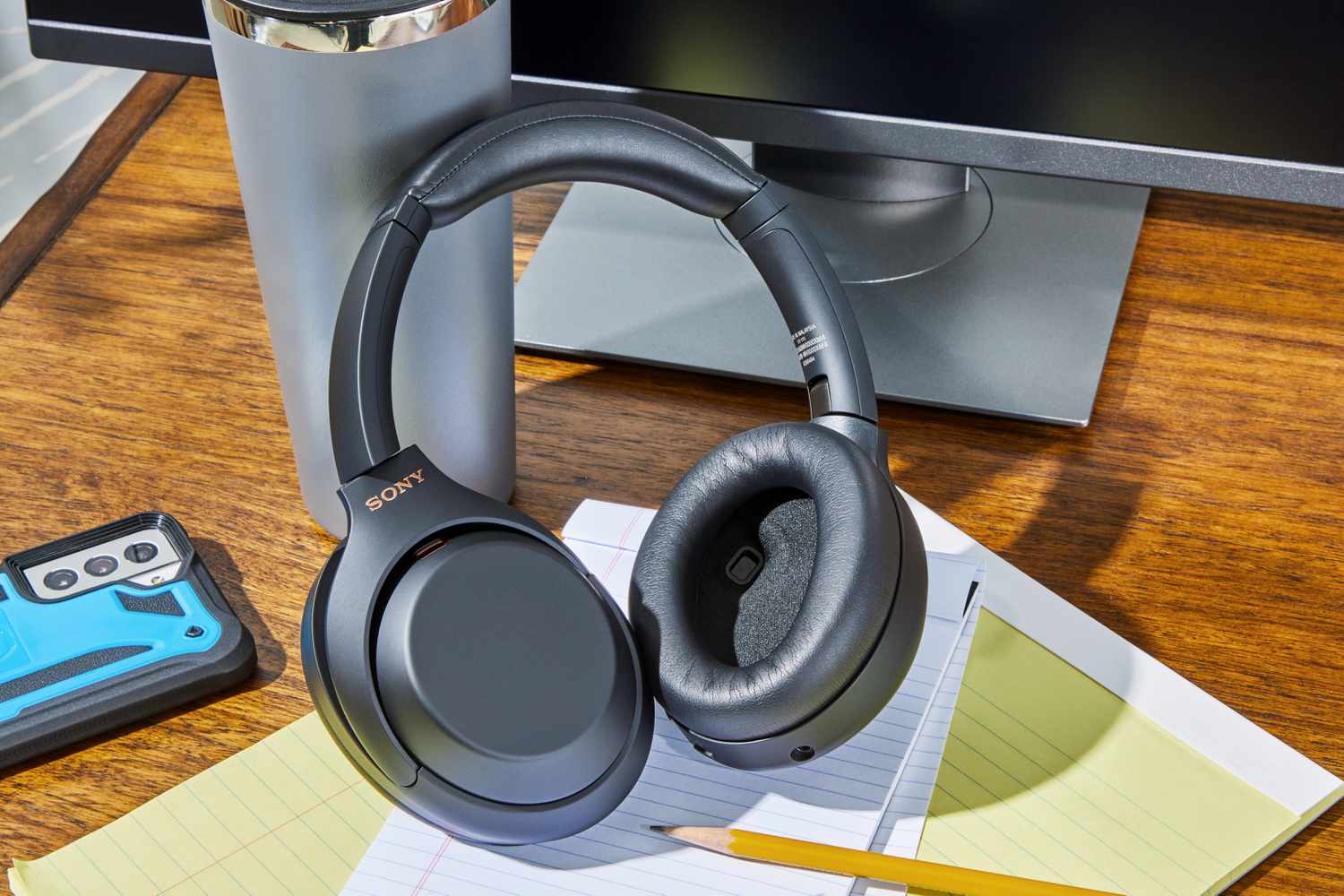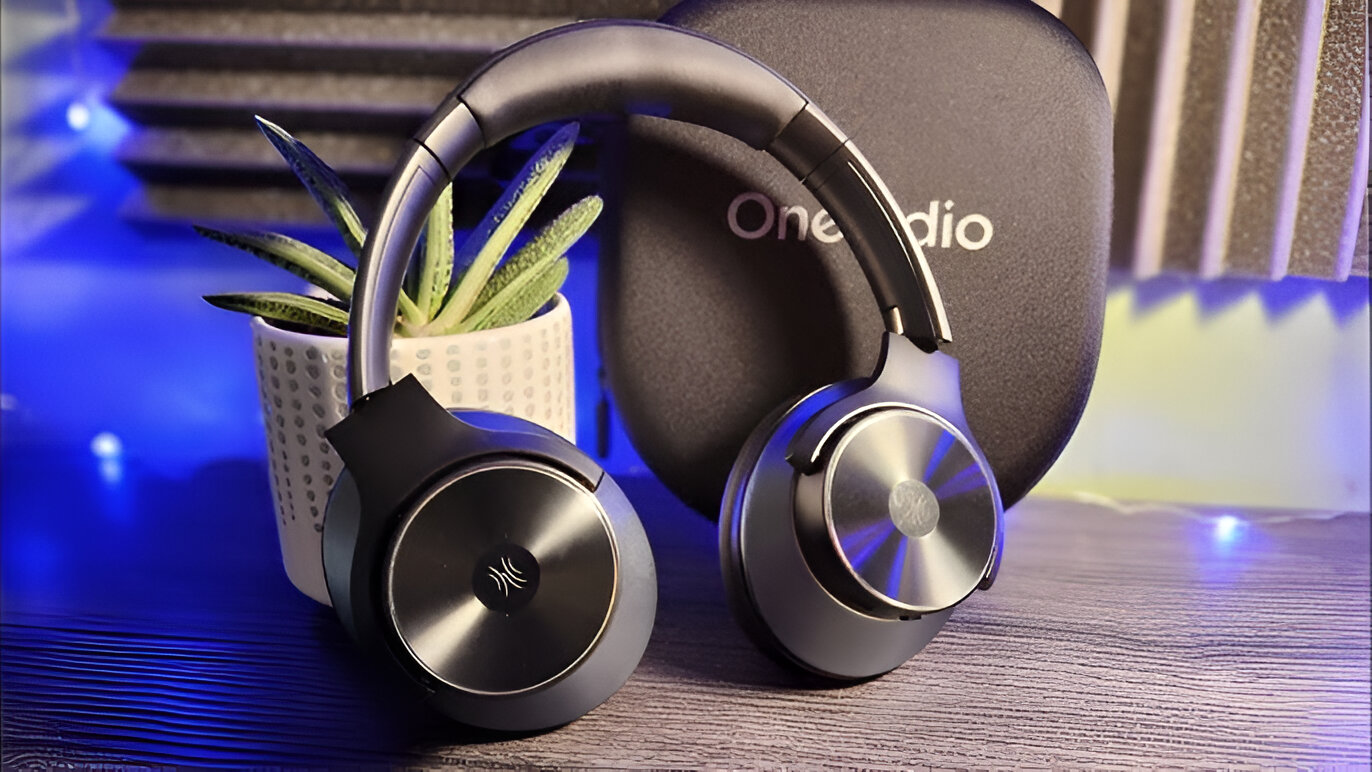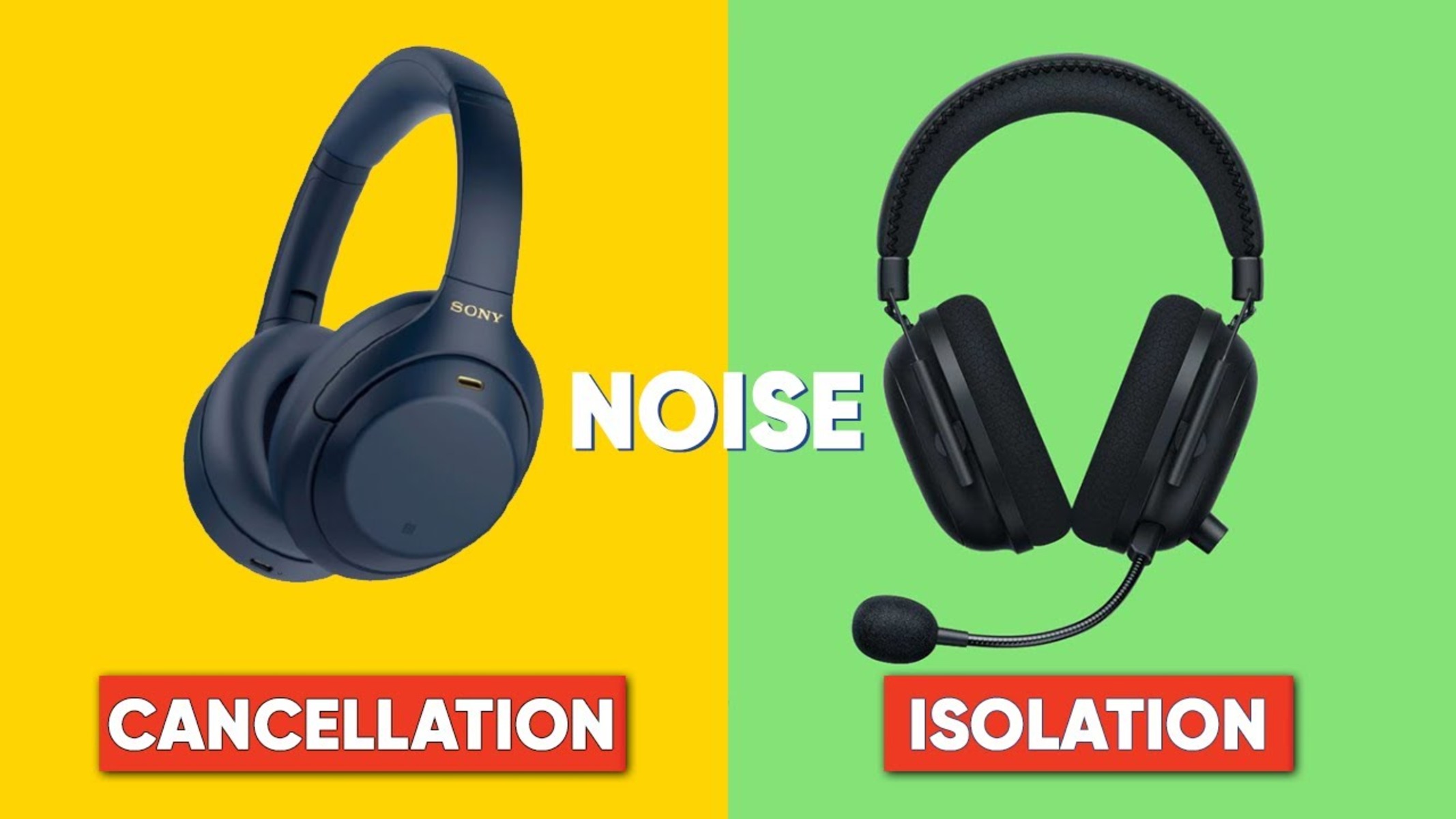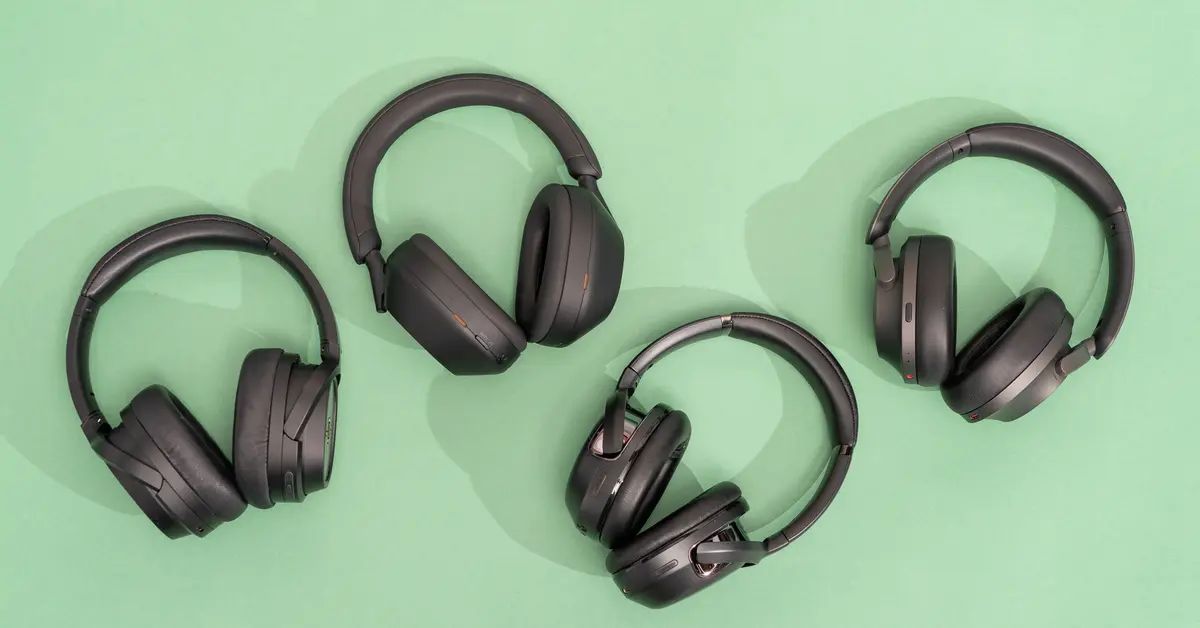Introduction
Welcome to the immersive world of over-ear headphones! These remarkable audio devices have revolutionized the way we experience sound, offering unparalleled comfort, exceptional sound quality, and advanced features that cater to the demands of modern music enthusiasts and audiophiles alike. In this article, we will delve into the fascinating realm of over-ear headphones, exploring their anatomy, sound production mechanisms, noise cancellation technology, and the myriad benefits they bring to the table.
Over-ear headphones, also known as circumaural headphones, are designed to fully enclose the ears, creating a seal that effectively blocks out external noise while delivering rich, detailed soundscapes. Unlike their on-ear counterparts, which rest on the ears, over-ear headphones envelop the ears, providing a more immersive listening experience and superior noise isolation. With their cushioned ear cups and adjustable headbands, these headphones offer a snug and comfortable fit, making extended listening sessions a pleasure.
These headphones are not merely audio accessories; they are gateways to a world of sonic exploration and auditory delight. Whether you're a music aficionado, a gamer seeking to immerse yourself in virtual realms, or someone who simply appreciates high-quality sound, over-ear headphones have something to offer for everyone. Join us as we uncover the inner workings of these remarkable devices, shedding light on the technology and engineering that make them a must-have for discerning audio enthusiasts.
From the intricacies of their design to the magic that happens within their ear cups, over-ear headphones are a testament to the marriage of engineering and artistry. So, sit back, relax, and prepare to embark on a journey through the captivating world of over-ear headphones. Get ready to discover the science, innovation, and sheer audio bliss that await within these remarkable devices.
Anatomy of Over-Ear Headphones
Understanding the anatomy of over-ear headphones is crucial to appreciating their comfort, sound quality, and overall functionality. These headphones consist of several key components that work in harmony to deliver an exceptional audio experience.
Ear Cups: The ear cups are the most prominent features of over-ear headphones, housing the speaker drivers and providing a comfortable enclosure for the ears. They are typically cushioned to ensure a snug fit and to minimize pressure on the ears during extended use.
Headband: The headband connects the ear cups and plays a pivotal role in distributing the weight of the headphones evenly across the wearer’s head. It is often adjustable to accommodate various head sizes and shapes, further enhancing comfort.
Speaker Drivers: These are the heart of the headphones, responsible for converting electrical signals into sound waves. Over-ear headphones often feature larger speaker drivers compared to other headphone types, allowing for a wider frequency response and more powerful bass.
Audio Cables or Wireless Connectivity: Over-ear headphones can be wired or wireless, with the latter utilizing Bluetooth or other wireless technologies for seamless connectivity to audio sources. Wired headphones typically feature detachable cables for convenience and easy replacement.
Ear Cushions: The ear cushions, also known as ear pads, are essential for providing a comfortable and ergonomic seal around the ears, contributing to passive noise isolation and preventing sound leakage.
Controls and Microphone: Many modern over-ear headphones come equipped with integrated controls for adjusting volume, managing calls, and controlling playback. Additionally, a built-in microphone facilitates hands-free communication when paired with a smartphone or other compatible devices.
By understanding the intricate design and functionality of these components, we gain a deeper appreciation for the thought and engineering that go into creating over-ear headphones. The seamless integration of these elements results in a cohesive audio device that not only delivers exceptional sound but also prioritizes user comfort and convenience.
How Over-Ear Headphones Produce Sound
The process through which over-ear headphones produce sound is a fascinating blend of physics, engineering, and acoustic principles. It all begins with the conversion of electrical signals into audible sound waves, a journey that unfolds within the confines of the headphones’ ear cups.
Transduction: When an audio signal is received from a source, such as a smartphone or a music player, it is transmitted to the headphones. The signal, typically in the form of an electrical current, is then directed to the speaker drivers within the ear cups.
Speaker Drivers: These drivers consist of a diaphragm, voice coil, and magnet assembly. When the electrical signal reaches the drivers, it interacts with the voice coil, causing it to move back and forth in response to the varying electrical currents. This movement sets the diaphragm in motion, which in turn generates sound waves by compressing and rarefying the air in front of it.
Frequency Response: The size and design of the speaker drivers contribute to the headphones’ frequency response, determining the range of audible frequencies they can reproduce. Over-ear headphones, with their larger drivers, are capable of reproducing a wide spectrum of frequencies, resulting in rich, detailed soundscapes that capture the nuances of music, dialogue, and ambient noise.
Enclosed Design: The enclosed nature of over-ear headphones plays a crucial role in sound production. By fully encompassing the ears, these headphones create a sealed environment that prevents sound leakage and minimizes external interference, resulting in improved sound isolation and a more immersive listening experience.
By unraveling the intricacies of sound production within over-ear headphones, we gain a deeper understanding of the technology that underpins their audio performance. From the transduction of electrical signals to the meticulous engineering of speaker drivers, each step in the process contributes to the creation of a captivating auditory experience that transcends mere sound reproduction.
Noise Cancellation Technology in Over-Ear Headphones
One of the most remarkable features of over-ear headphones is their ability to mitigate ambient noise through active noise cancellation (ANC) technology. This innovative feature sets over-ear headphones apart, making them indispensable for individuals seeking an uninterrupted and immersive listening experience, particularly in noisy environments.
Active Noise Cancellation: ANC technology functions by employing microphones integrated into the ear cups to detect ambient sounds. These microphones capture external noise, which is then analyzed by the headphones’ internal circuitry. Subsequently, the headphones generate anti-noise, which is essentially sound waves that are the inverse of the detected ambient noise.
Phase Reversal: The generated anti-noise is precisely synchronized with the detected ambient noise, resulting in phase reversal when the two sound waves converge. This phase reversal effectively cancels out the ambient noise, significantly reducing its impact on the listener’s auditory experience.
Passive Noise Isolation: In addition to active noise cancellation, the design of over-ear headphones, with their cushioned ear cups and closed-back construction, provides passive noise isolation by creating a physical barrier that blocks out external sound. This combination of active and passive noise reduction techniques results in a remarkably quiet listening environment, allowing users to focus on their audio content without distraction.
Benefits of Noise Cancellation: The incorporation of ANC technology in over-ear headphones offers a multitude of benefits. It enhances the clarity and intelligibility of audio by minimizing background noise, making it ideal for enjoying music, podcasts, or movies in bustling settings. Furthermore, noise cancellation can reduce listening fatigue, as users are not required to increase the volume to compensate for external noise, thereby promoting healthier listening habits.
By integrating advanced noise cancellation technology, over-ear headphones elevate the listening experience, providing a sanctuary of sound in any environment. Whether it’s the hum of a plane’s engines, the chatter of a bustling café, or the rumble of public transportation, over-ear headphones equipped with ANC technology empower users to immerse themselves in their audio content, undisturbed by the cacophony of the outside world.
Benefits of Over-Ear Headphones
Over-ear headphones offer a myriad of advantages that cater to the diverse needs and preferences of audio enthusiasts, making them a popular choice for individuals seeking a superior listening experience. From exceptional sound quality to enhanced comfort and versatility, these headphones are designed to elevate the way we engage with audio content.
- Superior Sound Quality: With their larger speaker drivers and closed-back design, over-ear headphones deliver immersive soundscapes with enhanced bass response, detailed midrange, and crisp highs. This results in a more dynamic and engaging audio experience, allowing users to appreciate the subtle nuances of their favorite music, movies, and games.
- Enhanced Comfort: The over-ear design, featuring spacious ear cups and cushioned padding, provides a comfortable and ergonomic fit for extended listening sessions. The distributed weight and soft materials minimize pressure on the ears and head, ensuring a pleasurable and fatigue-free experience.
- Noise Isolation and Cancellation: Over-ear headphones excel in isolating the listener from ambient noise, creating a secluded auditory environment. Additionally, models equipped with active noise cancellation technology further reduce external distractions, allowing users to immerse themselves fully in their audio content.
- Versatility and Connectivity: Over-ear headphones are available in both wired and wireless configurations, offering flexibility in connectivity options. Wireless models, often featuring Bluetooth technology, provide freedom of movement without compromising audio quality, while wired connections ensure compatibility with a wide range of devices.
- Long-Term Listening Comfort: The spacious ear cups and gentle clamping force of over-ear headphones make them well-suited for extended use. Whether for leisurely music listening, marathon gaming sessions, or long-haul travel, these headphones prioritize comfort, making them an ideal choice for individuals who value prolonged listening comfort.
From audiophiles seeking uncompromising sound fidelity to commuters craving respite from the urban cacophony, over-ear headphones cater to a diverse audience with their blend of exceptional audio performance, comfort, and advanced features. Whether at home, in transit, or in the office, these headphones provide an oasis of immersive sound, enhancing the way we engage with our favorite audio content.
Conclusion
Over-ear headphones stand as a testament to the marriage of cutting-edge technology and timeless craftsmanship, offering a gateway to a world of unparalleled audio immersion. From their meticulously engineered components to their advanced features, these headphones have redefined the way we experience sound, setting a new standard for comfort, performance, and versatility.
As we’ve explored the anatomy of over-ear headphones, delved into the intricate process of sound production, and marveled at the ingenuity of noise cancellation technology, it becomes evident that these audio devices are more than mere accessories—they are conduits that transport us to the heart of our audio content, enveloping us in a cocoon of sonic bliss.
The benefits of over-ear headphones extend far beyond their ability to deliver exceptional sound quality. They offer a respite from the chaos of the outside world, allowing users to retreat into a realm of pure audio enjoyment. Whether it’s the immersive soundstage, the comforting embrace of plush ear cups, or the seamless connectivity that wireless models provide, over-ear headphones cater to the diverse needs and preferences of modern audio enthusiasts.
Ultimately, over-ear headphones have transcended their utilitarian function to become essential companions in our daily lives, enhancing the way we engage with music, movies, games, and communication. They have become more than just audio devices; they are portals to sonic landscapes, conduits for emotional connection, and instruments of pure, unadulterated enjoyment.
So, as we bid adieu to this exploration of over-ear headphones, let us carry with us a newfound appreciation for the engineering marvels that grace our ears. Whether it’s the pulsating rhythm of a favorite song or the immersive dialogue of a blockbuster film, these headphones will continue to serve as loyal allies, faithfully delivering the gift of extraordinary sound to our eager ears.










